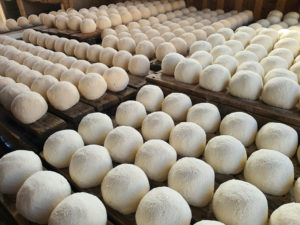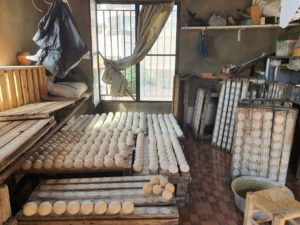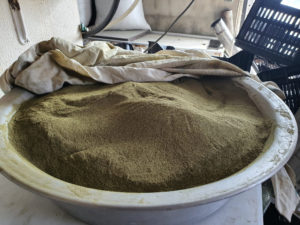Shanklish or Arisheh cheese

Shanklish or arisheh cheese is traditionally known as a product of Syria and northern Lebanon, particularly the Akkar Governorate. It is primarily produced by mountain villagers, especially those in Gebrayel and Rahbeh, who sell the surplus to generate additional income for their families. The method of production is passed down from generation to generation. This tradition comes from ancient knowledge of food preservation for the winter called muneh. Nowadays, Shanklish is also produced industrially.

This cheese is typically shaped into dry balls and covered on the outside with various ground spice mixtures, such as oregano or different types of pepper. The process of making Shanklish involves intensive manual labor. First, the fresh cow milk is transformed into laban (yoghurt). Conventionally, Shanklish was made from goat cheese. With time, the habits have changed and the last two generations have been preparing it with cow milk. Once the laban is ready, it is poured into a mechanical container in which it is shaken (until recently, the shaking process was done manually in an elongated pottery container). This process allows the separation of the samneh (butter) from the aayran (skimmed yogurt). Aayran is once again heated until it breaks down, and then poured into cotton cloth pieces, which are hanged over a sink until the water is drained (approximately twelve hours). The arisheh is then removed from the cotton cloth, salt is added to it, and it is is rolled into round individual pieces. These are set on paper towels and left to dry in the sun. Once the bolls are completely dried, they are placed in containers (today, glass containers have replaced pottery jars) and fermented slowly in a dark, dry place for two months. Traditionally, the balls were rolled in oregano. Today, different types of spices or mixtures of spices are used.

In the Akkar governorate, the only way to eat shanklish or arisheh, as it is called there, is to mix it with olive oil. In Beirut and other parts of the country, Shanklish cheese is commonly served as part of the Lebanese mezze. It is usually crumbled in the middle of a plate and surrounded by chopped onion, diced tomato, and minced parsley. Before consuming, all the ingredients are mixed together with olive oil. The taste is salty and pungent.

